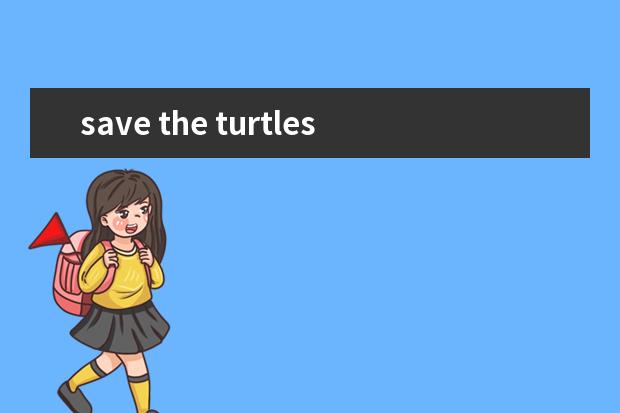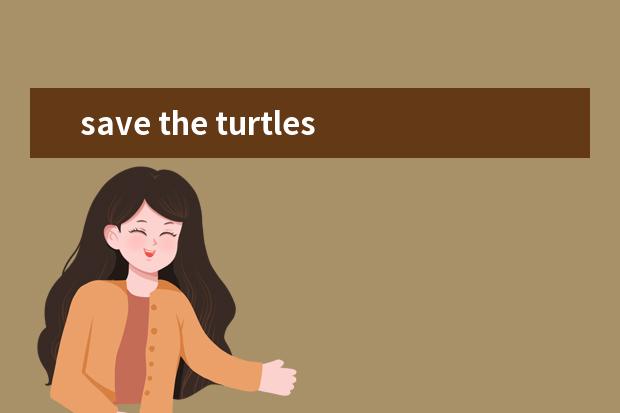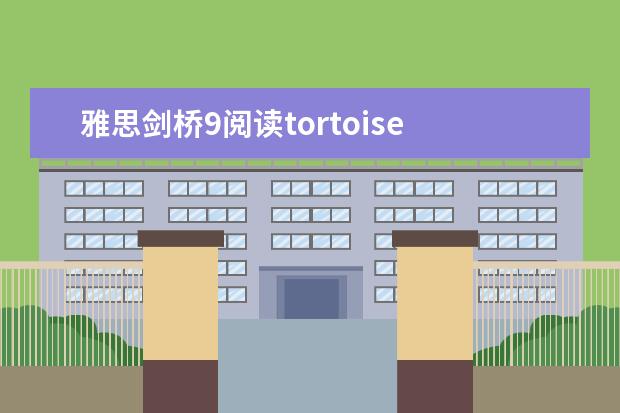当前城市:淄博[切换]
- 手机雅思无忧

扫码登录
今天雅思无忧小编整理了剑桥雅思阅读AUSTRALIA’SSPORTINGSUCCESS及答案解析(save the turtles雅思阅读)相关信息,希望在这方面能够更好帮助到大家。

做好雅思的阅读题除了掌握对的 方法 ,也离不开我们日常的辛勤练习,下面我给大家带来剑桥雅思阅读AUSTRALIA’S SPORTING SUCCESS及答案解析,一起加油吧!
剑桥雅思阅读AUSTRALIA’S SPORTING SUCCESS
READING PASSAGE 1
You should spend about 20 minutes on Questions 1-13, which are based on Reading Passage 1 below.
AUSTRALIA’S SPORTING SUCCESS
A They play hard, they play often, and they play to win. Australian sports teams win more than their fair share of titles, demolishing rivals with seeming ease. How do they do it? A big part of the secret is an extensive and expensive network of sporting academies underpinned by science and medicine. At the Australian Institute of Sport (AIS), hundreds of youngsters and pros live and train under the eyes of coaches. Another body, the Australian Sports Commission (ASC), finances programmes of excellence in a total of 96 sports for thousands of sport*en and women. Both provide intensive coaching, training facilities and nutritional advice.
B Inside the academies, science takes centre stage. The AIS employs more than 100 sports scientists and doctors, and collaborates with scores of others in universities and research centres. AIS scientists work across a number of sports, applying skills learned in one — such as building muscle strength in golfers — to others, such as swimming and squash. They are backed up by technicians who design instruments to collect data from athletes. They all focus on one aim: winning. ‘We can’t waste our time looking at ethereal scientific questions that don’t help the coach work with an athlete and improve performance,’ says Peter Fricker, chief of science at AIS.
C A lot of their work comes down to measurement — everything from the exact angle of a swimmer’s dive to the second-by-second power output of a cyclist. This data is used to wring improvements out of athletes. The focus is on individuals, tweaking performances to squeeze an extra hundredth of a second here, an extra millimetre there. No gain is too slight to bother with. It’s the tiny, gradual improvements that add up to world-beating results. To demonstrate how the system works, Bruce Mason at AIS shows off the prototype of a 3D *ysis tool for studying swimmers. A wire-frame model of a champion swimmer slices through the water, her arms moving in slow motion. Looking side-on, Mason measures the distance between strokes. From above, he *yses how her spine swivels. When fully developed, this system will enable him to build a biomechanical profile for coaches to use to help budding swimmers. Mason’s contribution to sport also includes the development of the SWAN (Swimming Analysis) system now used in Australian national competitions. It collects images from digital cameras running at 50 frames a second and breaks down each part of a swimmer’s performance into factors that can be *ysed individually — stroke length, stroke frequency, average duration of each stroke, velocity, start, lap and finish times, and so on. At the end of each race, SWAN spits out data on each swimmer.
D ‘Take a look,’ says Mason, pulling out a sheet of data. He points out the data on the swimmers in second and third place, which shows that the one who finished third actually swam faster. So why did he finish 35 hundredths of a second down? ‘His turn times were 44 hundredths of a second behind the other guy,’ says Mason. ‘If he can improve on his turns, he can do much better.’ This is the kind of accuracy that AIS scientists’ research is bringing to a range of sports. With the Cooperative Research Centre for Micro Technology in Melbourne, they are developing unobtrusive sensors that will be embedded in an athlete’s clothes or running shoes to monitor heart rate, sweating, heat production or any other factor that might have an impact on an athlete’s ability to run. There’s more to it than simply measuring performance. Fricker gives the example of athletes who may be down with coughs and colds 11 or 12 times a year. After years of experimentation, AIS and the University of Newcastle in New South Wales developed a test that measures how much of the immune-system protein immunoglobulin A is present in athletes’ saliva. If IgA levels suddenly fall below a certain level, training is eased or dropped altogether. Soon, IgA levels start rising again, and the danger passes. Since the tests were introduced, AIS athletes in all sports have been remarkably successful at staying healthy.
E Using data is a complex business. Well before a championship, sports scientists and coaches start to prepare the athlete by developing a ‘competition model’, based on what they expect will be the winning times.’ You design the model to make that time,’ says Mason.’ A start of this much, each free-swimming period has to be this fast, with a certain stroke frequency and stroke length, with turns done in these times.’ All the training is then geared towards making the athlete hit those targets, both overall and for each segment of the race. Techniques like these have transformed Australia into arguably the world’s most successful sporting nation.
F Of course, there’s nothing to stop other countries copying — and many have tried. Some years ago, the AIS unveiled coolant-lined jackets for endurance athletes. At the Atlanta Olympic Games in 1996, these sliced as much as two per cent off cyclists’ and rowers’ times. Now everyone uses them. The same has happened to the ‘altitude tent’, developed by AIS to replicate the effect of altitude training at sea level. But Australia’s success story is about more than easily copied technological fixes, and up to now no nation has replicated its all-encompassing system.
剑桥雅思阅读AUSTRALIA’S SPORTING SUCCESS题目
Questions 1-7
Reading Passage 1 has six paragraphs, A-F.
Which paragraph contains the following information?
Write the correct letter, A-F, in boxes 1-7 on your answer sheet.
NB You may use any letter more than once.
1 a reference to the exchange of expertise between different sports
2 an explanation of how visual imaging is employed in investigations
3 a reason for narrowing the scope of research activity
4 how some AIS ideas have been reproduced
5 how obstacles to optimum achievement can be investigated
6 an overview of the funded support of athletes
7 how performance requirements are calculated before an event
Questions 8-11
Classify the following techniques according to whether the writer states they
A are currently exclusively used by Australians
B will be used in the future by Australians
C are currently used by both Australians and their rivals
Write the correct letter, A, B or C, in boxes 8-11 on your answer sheet.
8 cameras
9 sensors
10 protein tests
11 altitude tents
Questions 12 and 13
Answer the questions below.
Choose NO MORE THAN THREE WORDS ANDIOR A NUMBER from the passage for each answer.
Write your answers in boxes 12 and 13 on your answer sheet.
12 What is produced to help an athlete plan their performance in an event?
13 By how much did some cyclists’ performance improve at the 1996 Olympic Games?
剑桥雅思阅读AUSTRALIA’S SPORTING SUCCESS答案
Question 1
答案:B
关键词:exchange of expertise, between different sports/collaborate, across a number of sports
定位原文:B段第2、3句“...and collaborates with… a number of sports …”
解题思路: 题干中讲到不同体育领域的专业知识交流正好跟原文中跨不同体育专家之间的合作相对应,理解意思即可容易找到正确答案。
Question 2
答案:C
关键词: visual imaging/3D, image
定位原文: C段第6句: “...shows off the prototype of a 3D *ysis …”
解题思路: 通过题干中的视频成像可以很容易找到原文中对应的3D和成像。
Question 3
答案:B
关键词: a reason for narrowing/ can’t waste time
定位原文: B段最后1句: “We can’t waste our time looking…”
解题思路: 题目中的research activity和原文中的scientific questions 属于同义表达,定位答题区域,发现此句话所要表达的意思是不在一些飘渺的、不切实际的科学问题上浪费时间,也就是说要缩小研究的范围。
Question 4
答案:F
关键词:AIS ideas reproduce/ copying
定位原文: F段第1句话 “Of course, there’s nothing…”
解题思路: 题干中的reproduce是复制的意思,之后从 文章 中发现 句子 有复制copying,即可以直接定位。
Question 5
答案:D
关键词:Obstacle, investigated/ impact, monitor
定位原文: D段第6句“... to monitor heart rate…”
解题思路: 题干提到理想成绩的障碍是如何被调查研究的,而读到对应句子之后看到正好是sensors(传感器)对于运动员跑步的impact(影响)进行研究的仪器,而且obstacles和impact对应。
Question 6
答案:A
关键词:Overview, funded support finance
定位原文: A段倒数第2句 “...finances programmes of excellence…”
解题思路: finances是解题关键,意思为资助,正好跟题干中funded support表达了相同的义项,直接对应。而且之后一句话提及以上项目所提供的服务和建议,可以确信答案。
Question 7
答案:E
关键词:Calculated before an event/ using data, well before a championship
定位原文: E段第1句、第2句 “Using data is a complex business. Well before a championship, ...”
解题思路: 首先通过well before a championship和文章中before an event定位到E段, 之后发现后面提及的“竞争模型”作用就是计算时间和速率,因此内容对应上calculate,此时可断定答案的位置。
Question 8
答案:A
关键词: digital cameras
定位原文: C段倒数第3句: “..SWAN system now used in Australian national…”
解题思路: 前一句已经提到该系统已广泛应用于澳大利亚各项全国赛事之中,而没有提到其他国家,因此可以判断应该只有澳大利亚人在使用。
Question 9
答案:B
关键词:sensor
定位原文: D段第7句:“...With the Cooperative Research Centre for Micro…”
解题思路: 找到相同对应词sensor,读其前后的句子,发现有 Melbourne,断定是澳大利亚人的发明。之后要特别留心动词develop运用现在进行时,表示正在开发;而且注意之后的定语从句采用了将来时,所以可以断定此发明还没有完成,应该属于将来的成果。因此选择B。
Question 10
答案: A
关键词:protein
定位原文: D段倒数第4句: “… AIS and the University of Newcastle…”
解题思路: 非常容易在前面第一句话中找到跟题目protein tests所对应的词语a test ...protein。之后细读前后句,发现后面一句话对于此项科技成果的受益者文章中只提到AIS运动员,即澳大利亚体育学院的运动员,隶属于澳大利亚,所以应该选择A。
Question 11
答案:C
关键词: altitude tent
定位原文: F段倒数第2句: “The same has happened to the ‘altitude tent ’…”
解题思路: 文章中很容易找到用引号括起来的题目中的名词 短语 ,因此只要细心读原句,就会发现开头的‘The same has happened...’同样的事情也发生在……根据 经验 应该顺着文章向上追溯,发现跟‘altitude tent’相同情况的是1996年奥运会上澳大利亚人受益的流线型散热运动服现在全世界都在用。因此 ‘altitude tent’也被世界各国应用。所以答案应该选择C。且根据此段话大意可以了解文章只提到两种研究成果被别国运用,即髙原帐蓬和流线型散热服。所以可以间接判断前三项成果是由澳大利人独享的。
Question 12
答案: (a)competition model
关键词: help an athlete plan, produced / prepare the athlete by, developing
定位原文: E段第1句“Using data…”
解题思路: Help an athlete plan their performance 对应上prepare the athlete by之后,要认真研究题目所问的是what is produced,断定所作答案必定要填一个名词。因此要细读原文发现有单词developing恰与produced相对应,中文意思是“开发”,则答案必定是开发之后的名词。
Question 13
答案: (by)2 percent/%
关键词: 19% Olympic Games, cyclists, improve
定位原文: F段第3句“At the Atlanta…”
解题思路: 分析问句是 ‘By how much... improve’,意思为“提高了多少”,可以判断出答案需要写一个数字。因此仔细阅读相关语句找到 sliced as much as two per cent off cyclists ‘and rowers’ time。很快就可以找到数字百分之二
。
鸟瞰《剑9》听力 一、新题or旧题
虽然《剑9》刚刚出炉,但从上表可以看出,其收录的题目集中出现在09年以前,并在之后多次考过。由于《剑9》的出版,这些题目将从题库中淘汰出来,以后不会再用。 注:表中Vxxxx表示机经版本号 二、场景
场景方面,《剑9》可谓中规中矩,没有太多的惊喜。 找工作、租房、旅游、医院注册、学习讨论等有些“老调重弹“的味道。比如Test 3 Section 3论文讨论场景,标题里出现了tutorial这个词,如果考生能将其直接理解为“课程”,那对于整个section的题目将会很有帮助。所以,针对这些高频场景,考生平时要善于总结和背诵一些特色词汇,特别要从发音的角度,记忆单词。 三、题型
从上图不难看出,《剑9》中的雅思听力十大题型,summary缺席,outline题目数量最多,table和单选所占比重不小,short-answer question出现最少,这跟2021年第一季度雅思听力考试的情况极为相似。
题型方面,仍以填空题为主,填空题和选择题比重大致为2:1。重点考察的还是单词的辨音能力,常考的点有:数字十几和几十的区别、名词单复数,如Test 3 Section 4第40题,有的考生在写答案时,容易在15和50中纠结和徘徊。 四、 难度 《剑9》作为剑桥雅思系列家族新成员,听力部分整体难度与《剑2-8》相当,无论是场景、题型、语音、语调、语速,还是考点词,都是对《剑2-8》的一个延续,这也是意料之中的事情。 逆袭《剑9》听力 有人把世界上的青年分成三种:普通青年、文艺青年、二逼青年。雅思江湖中也有三种考生:普通烤鸭、文艺烤鸭、二逼烤鸭。无论哪一款,都曾被雅思折磨过。 普通烤鸭说:为何我待雅思如初恋,雅思偏要虐我千百遍。 文艺烤鸭说:雅思,好想在高考前6个月遇见你,因为那是人生一段惊艳的时光,上知天体运行原理,下知有机无机反应,左有椭圆双曲线,右有杂交生物圈,外可说英语,内可休古文,求得了函数,聊得来马哲,溯源中华上下五千年,延推赤州陆海百万千,既懂音乐美术计算机,兼修武术民俗老虎钳。 二逼烤鸭说:不想再和雅思谈恋爱,嘿嘿,赞人品、求分手。 如何从雅思听力5分*丝,逆袭为6分达人,甚至进阶到7分高富帅,方法多种多样、千奇百怪,但万变不离其中。独孤九剑之破剑式告诉我们:破剑式用以破解普天下各门各派的剑法,虽只一式,但其集中天下各门各派剑法要义兼收并蓄,虽说“无招”,却是以普天下剑法之招数为根基。另外,时刻牢记“天下武学,唯快不破“,速度的判断和速度的出手,在敌人出手的一刹那察觉敌人的破绽,然后在敌人来不及变招的情况下速度的制敌。雅思听力与此相通,审题的速度决定解题的高度,遗憾的是无数的考生都栽倒在这个环节;录音开始前的30秒,何其关键,可却有人偏偏漠视它。尤其2021年,听力选择题长度和难度日益加大,审题越来越重要。 《剑9》的出现,除了增加4套真题可供练习外,烤鸭应该巧用《剑9》进行审题训练,具体方法如下: 1、 打开任意一个section,计时30秒,浏览一遍题目; 2、 不要计时,把刚才的section再看一遍; 3、 对两遍的审题进行比较,调整审题思路,提升精准定位的能力。 以上为雅思听力提分心法,有缘人得之。 从去年下半年,江湖上就一直流传着关于《剑桥雅思全真试题集9》(以下简称《剑9》)的各种传言,终于在3月5号,比预计发行时间提早一个月露出了它的真面目。 下面把《剑9》中的口语部分具体内容总结如下:
纵观《剑9》全部四套试题,口语出题形式和题型都没有发生任何改变。第一部分都是考生相对比较熟悉,较为简单的话题,可以看做是个热身(Warm up),主要目的是帮助考生放松心情,更好的进入考试状态。但是作为第一次参加考试的同学需要注意,第一部分不止一个话题,考官一般会就三个主要话题对考生进行提问,每个话题下都会有4到5个小问题,第一部分考试整体用时大约5分钟。其中的第一个话题大多(9成以上的考生)都是围绕Hometown, Accommodation和Study/Work展开,而第二和第三个话题会由考官随机选取。 《剑9》口语第二部分的话题仍旧围绕人物(People),地点(Places),物品(Objects)和事件(Events)展开.比如“描述一个你喜欢去的露天或是街边的集市”属于地点类的题目,“描述一件你做过新颖或者*的事情”和“描述一次你记忆中做车,坐飞机或是坐船的旅程”都属于事件类,而“描述一个乐于助人的人”属于人物类话题。考生在准备第二部分的话题时,可以根据话题的不同类别加以合理的拓展和描述。例如在描述人物类的话题时,应当选取人物的一到两个比较特别的性格特点,附加实际事例或故事加以阐述。描述地点类的话题时通过Where (具*置,坐落在哪), When (去的频率或是最近一次去的时间), Who(自己还是别人一起去), What (什么样子的,可以看到,*到,玩到,吃到些什么)and Why (为什么喜欢)来拓展思路。而事件类的题目主要集中在描述事件的内容和感受上。 《剑9》第三部分的题目来看,仍旧集中在五大题型上,它们分别是:Describe(例如What are some of the ways people can help others in the community?),Compare and Contrast(例如Do you think children and *s learn to do new things in the same way?),Discuss advantages and disadvantages(例如What do you think are advantages of buying things from shops rather than markets?),Explain(例如Why do people need to travel every day?)Express and Justify opinions(例如, Some people say that it is more important to be able to learn new things now than it was in the you agreeor disagree with that? Why?). 就以往的《剑桥雅思全真试题集(1-8)》来看,书中收录的听力,阅读和写作的所有考题都是从题库中淘汰的旧题,在今后的雅思考试中不会再次原题重现。但是口语却是个例外,题库只会增加新题,很少淘汰老题目,很多老话题做适当的调整或修改后出现在不同的部分而已,例如《剑桥雅思全真试题集8》(以下简称《剑8》)Test1, Part1的话题neighbor经过改编后成为了去年9月到12月雅思口语考试中第二部分描述人物的一个话题,叫做Describe a neighbor of yours. 《剑9》Test1, Part1的话题Game变成了Describe a game (not sports game) in your childhood,而Test3, Part2的话题Describe a journey [e.g. by car, plane, boat]that you remember well,变成了Describe a perfect holiday/vacation you would like to have. 并都出现在了2021年1月以来的考之中。原题重现也是非常频繁的事情,例如《剑8》Test2, Part2的Topic “Describe a restaurant that you enjoyed going to”就以原题的形式出现在《剑8》发行一年后,2021年4月的考试中。而《剑9》Test3, Part1的话题Telephoning正是今年1月份雅思口语考试第一部分的高频话题之一。 综上所述,只要考生做到考前认真归纳总结,掌握雅思口语考官的出枪轨迹,即每种题型的解题思路和方法,并开口加以练习,就可以见招拆招,力达枪尖,一招破枪! 《剑桥雅思考试全真试题集9》(下文简称《剑9》)已于3月5日正式出版发行,雅思江湖硝烟再起。作为新航道的雅思教头,本师在第一时间研读此书,就A类阅读部分进行了分析,希望帮助广大雅思考生揭开《剑9》的神秘面纱,赠送“烤鸭”破除阅读刀法之秘技。 作为雅思考试的主办方之一,剑桥大学考试委员会上一次发布《剑桥雅思考试全真试题集8》是在2021年3月底。时隔两年,再次发布《剑9》基本符合剑桥大学考试委员会的常规做法。《剑9》的发布对广大雅思考生是权威的备考资料,对雅思培训教师也是不可多得的研究资源,值得大家认真学习和研究。 首先希望广大雅思考生注意的是,《剑9》里面收录的是雅思考试的authentic past papers,即为在过去的雅思考试中真题,也就是说,在今后的雅思考试中不会再出现《剑9》里面收录的真题了。所以,大家不要希望做了《剑9》,在考场上还能碰到一模一样的题目。其实,就A类阅读而言,《剑9》里面收录的真题大多是在2008和2009年中国大陆地区的考试中出现的,近两年出现的题目非常少,通过下面的表格,同学们可以了解下《剑9》A类阅读的文章内容和题型。
从上面的表格中,我们可以看出《剑9》中收录的阅读文章的背景还是以科普类的文章居多,这符合雅思考试的两个测试特点International(国际化)和None-professional(非专业化)。 此外,就题型类别上,我们通常说的雅思阅读5种重点题型:T/F/NG(判断题)、Matching (搭配题)、Multiple Choice (选择题)、Summary(摘要填空)和List of Headings(标题题)都有出现,而且T/F/NG(判断题)、Matching (搭配题)和Multiple Choice (选择题)3种题型的题量占了绝对优势,总和接近题目总量的70%。另外我们常说的3种次要题型:Short Answer Questions (简答题)、Sentence Completion (完成句子)和Flow-chart, Diagram and Table Completion(图表题)在《剑9》中,Short Answer Questions (简答题)的题量上升至17题,Sentence Completion (完成句子)也达到了15题,紧跟在前3种绝对优势的重点题型之后,值得广大“烤鸭”们注意。 结合2021年前两个月的考试,T/F/NG(判断题)和Matching (搭配题)依旧独领*,是雅思阅读的重点刀法,但在近两个月的考试中,几乎每次都出现了Summary(摘要填空)这一刀。不要认为《剑9》里Summary(摘要填空)只出现两次,共7题就是不重要的题型了,平时的备考也不用多练习了,那就可能成为雅思考官的“刀下游魂”了! 最后,本师还想就如何使用《剑9》来破雅思阅读之刀提供自己的心经。建议“烤鸭”们把《剑9》的阅读部分做3遍(即3个层次)以达真正破解之道。第1个层次,修炼要点是把《剑9》阅读每篇文章的每道题真正搞懂,达到能够“解释”的水平。也就是说,不要心里认为自己懂了,而是要用清晰的语言把每道题目的考查点和解题思路说出来,能“解释”给别人听,这才算是过关。第2个层次,不是在做题了,而是训练对考官“出刀方位”的敏感度。修炼要点是看到《剑9》阅读的每道题,不用翻看前面的文章,能把原文中考点对应的句子复述出来。“烤鸭”们可能都有所了解(如果你遇到过雅思阅读明师,这里没有写错,是“明师”而不是“名师”,指的是“明白的老师”):雅思考官使用阅读刀法的核心是“同义替换”。只有在第2个层次上对这一核心进行密集训练,才能突破限制,挥手破刀。最后,第3个层次是更高的要求,是希望考到阅读7分以上的“烤鸭”们应该修炼的步骤:精读《剑9》A类阅读的12篇文章。修炼要点是精读文章中句子与句子之间的衔接,分析出每句话之间的衔接关系和衔接手法。修炼完这个层次的“烤鸭”能达到正本清源,甚至能开阅读之“天眼”:不再通过理解一个接一个句子去获取信息,而是通过篇章及段落的信息组织方法去预知、验证及判断信息。这已经超越了雅思阅读本身,而是学术阅读的高级阶段。真正在考官出手之前就看到了出刀的轨迹,达到“空手夺白刃”,高手啊! “烤鸭”们,《剑9》给大家多了一本修炼的材料,希望本师上述的解析帮助大家修炼成功,早日破解雅思阅读之刀,要努力哦! Task 1 Briefing 《剑9》收集了3套数据类作文题和1套地图题,基本沿袭了《剑8》中数据类作文题和非数据类作文题3:1的格局。下面将分别予以分析。 数据类作文题 《剑9》中的这类题目分别是bar chart, pie chart和line graph.虽然图形不同,但是特点一致:都是有时间跨度的动态图形,涉及的时间分别是1995-2002,2000/2050,1980-2030。这一组合与以前的《剑》系列真题相比较而言,有两点值得关注。 第一,《剑9》没有选择静态图形。 但是我们不认为在今后的备考中不需要重视静态图形了,这一点需引起大家重视。纵观2021年task 1数据类作文题,静态图形的比例约为45%。这对于一些“言图表必称趋势”的考生尤其重要——不要因《剑9》的无心之举而自作多情,需知有些情是伤不起的。不过,这个安排并不是很过分,因为动态图形在考试中确实“大众”一些。 在此提醒自认为容易“阴沟里翻船”的考生,应该根据自己的智力和心理特点,充分准备这类题型,否则考试的时候,就只能明明白白地看着自己需要再次光临“雅”舍。 第二,《剑9》有两套题都涉及了将来时间。 在之前的真题集中,只有剑5 test 1(1940-2040)出现过将来时间,成为很多同学练习中的一个难点,但涉及将来时间的相关题目在最近两年屡见不鲜。这类题目多涉及对于将来情况的预测、规划等,考生自己一定要熟悉projection/project(v.)/plan/forecast/estimate等词的灵活使用。在此提醒对于图表作文时态处理还不够从容的考生,苦心练“剑”的时候,可不能枉费了《剑9》选编者的此番苦心。否则,落花有意,流水无情,岂不可惜? 非数据类作文题 《剑9》Test 1收录了地图题一套,呈现了一个小岛(据图所示,非桃花岛,似椰树岛)的历史旧貌和规划建设之后的现状,写作中突出一个“变”字,即要考生比较两者,写出椰树岛的变化。此题一出,即与《剑5》Test 3的地图题遥相呼应,较为完美的呈现了现行题库中地图题的庐山真貌。相比之下,《剑5》地图题没有时间推移,亦无沧海桑田,写作重在一个“比”字,即要考生对图中两点进行全方位的比较对比。我倾向于把《剑5》test 3所代表的归类为静态地图题,而把《剑9》test 1所代表的归类为动态地图题。在2009年以来的地图题当中,以动态类地图题为主。因此,《剑9》这道题具有十分重要的地位。在培训和备考中,应该将其纳入讲学必备的题目当中。考生自然需要仔细查阅考官范文,总结其中写作心法。心法既得,万象皆空。 Task 2 Briefing 《剑》系列真题中的task 2作文题目尤其引人注目。不过这次的《剑9》和江湖上对于“新书出新题”的预期大相径庭,不论从题目的题型还是话题选择上,都没有肩负起其作为题库道德楷模的责任和展示“新题型”的义务,大有我行我素、笑傲江湖之风。 题型分析 《剑9》所选的4套A类task 2真题都属于Argumentation(论辩型题目)的类型,尽管具体的提问方式有所差别(如Table 1所示),2套G类task 2题目也同属此类。也就是说,此选集中没有选择Reasons/Solutions(RS)题型的题目,或者RS与Argumentation综合类的题目。对此现象的解读远没有澄清对此的误读更重要——“我们只需要准备第一类题目即可,因为《剑9》展示了这一点”,其中道理与本文在task 1 briefing部分的说明一致。2021年2月23日的考试task 2题目即是要求考生谈论为什么现在大学生选择纯理科科目的人不多极其影响,即RS题型。 不过,《剑9》的这种选择方式仍然情有可原,因为在历年考试以及题库中,Argumentation题型的确占据绝大部分,很多情况下都可超越8成的比例。总之,只要读者面对这个选集的时候不要过度意淫其旨,则不会对其身心健康不利。 Table 1
话题及题源分析 《剑9》中的4套A类写作题目涉及的话题均为雅思考试中屡考不衰的“百年老题”,分别为教育(2题)、公共健康(1题)、语言文化(1题)(参见Table 2)。题目所涉及的论题也是学生生活、学习中的常见话题,当然也不会给我们带来“惊艳”的感觉。就所选题目的题源而言,年代已然“久远”——最近的为2009年献身江湖的题目。那这是正常呢还是正常呢还是很正常呢? 很正常。 由于能编入雅思考题的话题和论题有较强的限制性(此处省略xxx字),所以在每年的真实考试中能出现的新论题较少,新话题更少,很多时候是出题者将题库中的旧有的论题重新改写,(如换一角度或侧重点等),变化延伸为“新”题目,重新投放每次的考试题库当中。因此,table 2中所展示的话题总结和题源分析就不足为奇了。下次在考场上,你可能还会碰到这些话题,甚至相似的论题,这也不足为奇,这一点已经为历年考试所证明,限于篇幅,就不在此鳌述相关数据了。在此,需要提醒广大要踏入江湖的考生,务虚熟悉各门各派的出招路数,了解雅思话题出题的界门纲目科属种,这样才会游刃有余。
Table 2
以上,就是雅思无忧小编给大家带来的剑桥雅思阅读AUSTRALIA’SSPORTINGSUCCESS及答案解析(save the turtles雅思阅读)全部内容,希望对大家有所帮助!
 雅思剑9:阅读的深度分析及趋势预测(save the turtles雅思阅读)
雅思剑9:阅读的深度分析及趋势预测(save the turtles雅思阅读)
雅思剑9:阅读的深度分析及趋势预测您好,我是专注留学考试规划和留学咨询的小钟老师。在追寻留学梦想的路
2023年10月27日 08:06 save the turtles雅思阅读 剑桥雅思9的总体趋势分析 请问2023年2月23日雅思阅读考试真题及答案
save the turtles雅思阅读 剑桥雅思9的总体趋势分析 请问2023年2月23日雅思阅读考试真题及答案
savetheturtles雅思阅读您好,福州朗阁培训中心为您解答,您指的是雅思剑桥9的一道阅读真题
2023年10月27日 08:49 请问2023年剑桥雅思阅读真题解析:Thomas Young(save the turtles雅思阅读)
请问2023年剑桥雅思阅读真题解析:Thomas Young(save the turtles雅思阅读)
请问2023年剑桥雅思阅读真题解析:ThomasYoung您好,我是专注留学考试规划和留学咨询的小钟
2023年10月27日 16:43 剑桥雅思考试全真试题集9的全面解析 求剑桥雅思9 G类答案 save the turtles雅思阅读
剑桥雅思考试全真试题集9的全面解析 求剑桥雅思9 G类答案 save the turtles雅思阅读
剑桥雅思考试全真试题集9的全面解析鸟瞰《剑9》听力一、新题or旧题虽然《剑9》刚刚出炉,但从上表可以
2023年10月27日 19:21 save the turtles雅思阅读(剑桥雅思考试全真试题集9的全面解析)
save the turtles雅思阅读(剑桥雅思考试全真试题集9的全面解析)
savetheturtles雅思阅读您好,福州朗阁培训中心为您解答,您指的是雅思剑桥9的一道阅读真题
2023年10月27日 19:21 求剑桥雅思9 G类答案 save the turtles雅思阅读 2023年7月10日雅思阅读部分考试答案
求剑桥雅思9 G类答案 save the turtles雅思阅读 2023年7月10日雅思阅读部分考试答案
求剑桥雅思9G类答案你好这位朋友,剑桥雅思CambridgeIELTS9GeneralTrainin
2023年10月31日 11:14 请问2023年剑桥雅思阅读真题解析:Thomas Young save the turtles雅思阅读 剑桥雅思考试全真试题集9的全面解析
请问2023年剑桥雅思阅读真题解析:Thomas Young save the turtles雅思阅读 剑桥雅思考试全真试题集9的全面解析
请问2023年剑桥雅思阅读真题解析:ThomasYoung您好,我是专注留学考试规划和留学咨询的小钟
2023年11月01日 05:03 save the turtles雅思阅读(剑桥雅思9:阅读题型及要点剖析)
save the turtles雅思阅读(剑桥雅思9:阅读题型及要点剖析)
savetheturtles雅思阅读您好,福州朗阁培训中心为您解答,您指的是雅思剑桥9的一道阅读真题
2023年11月02日 00:36 福州雅思培训朗阁 save the turtles雅思阅读
福州雅思培训朗阁 save the turtles雅思阅读
雅思考试主要是通过对考生听、说、读、写四个方面英语能力的考核,综合测评考生的英语沟通运用能力,实现“
2023年02月27日 10:46 雅思剑桥9阅读tortoise save the turtles雅思阅读
雅思剑桥9阅读tortoise save the turtles雅思阅读
剑桥雅思9的总体趋势分析Part1:【题库范围】:游戏、礼物、电话、骑车【语法范畴】:一般现在时、过
2023年12月14日 10:35